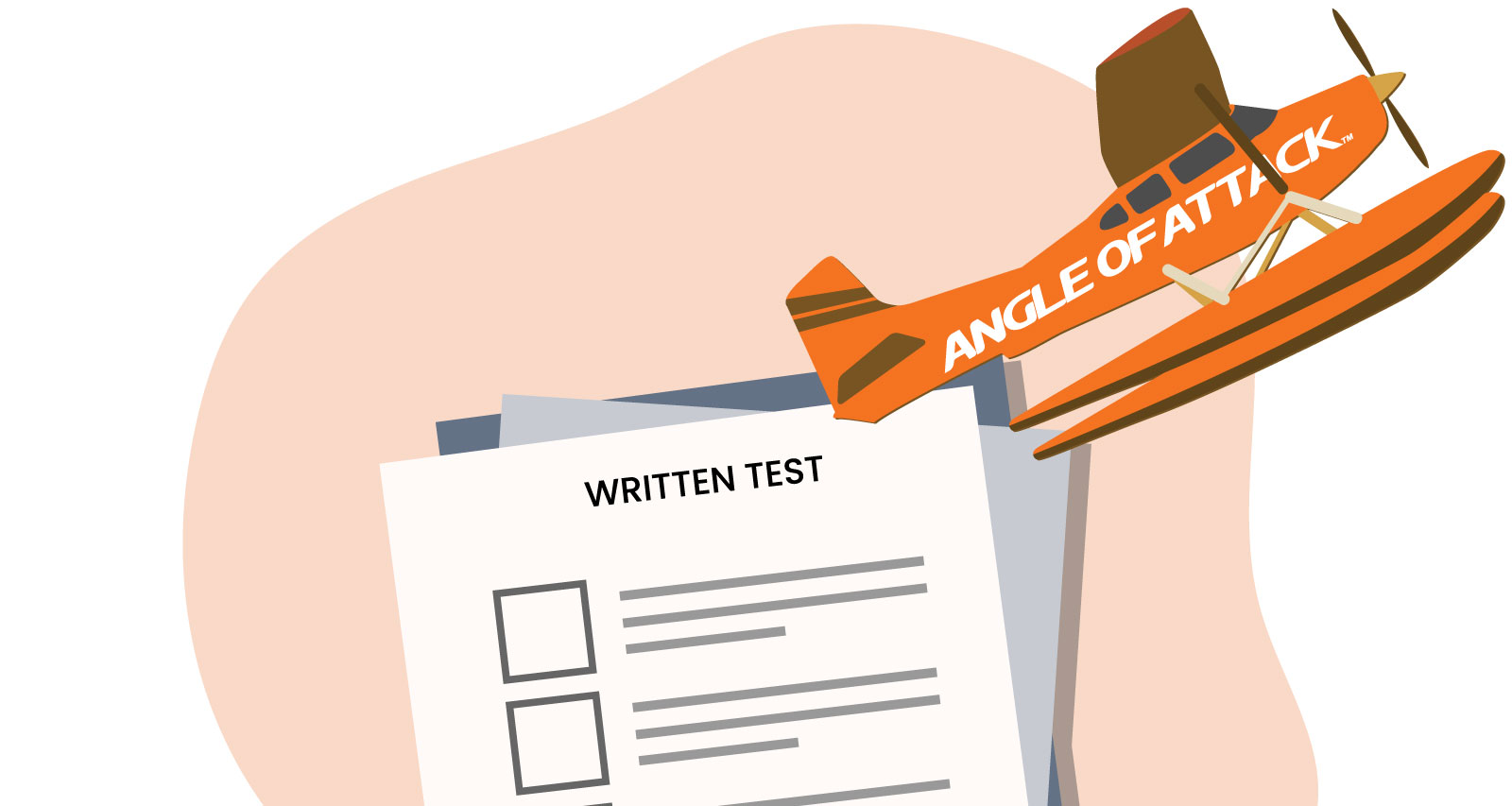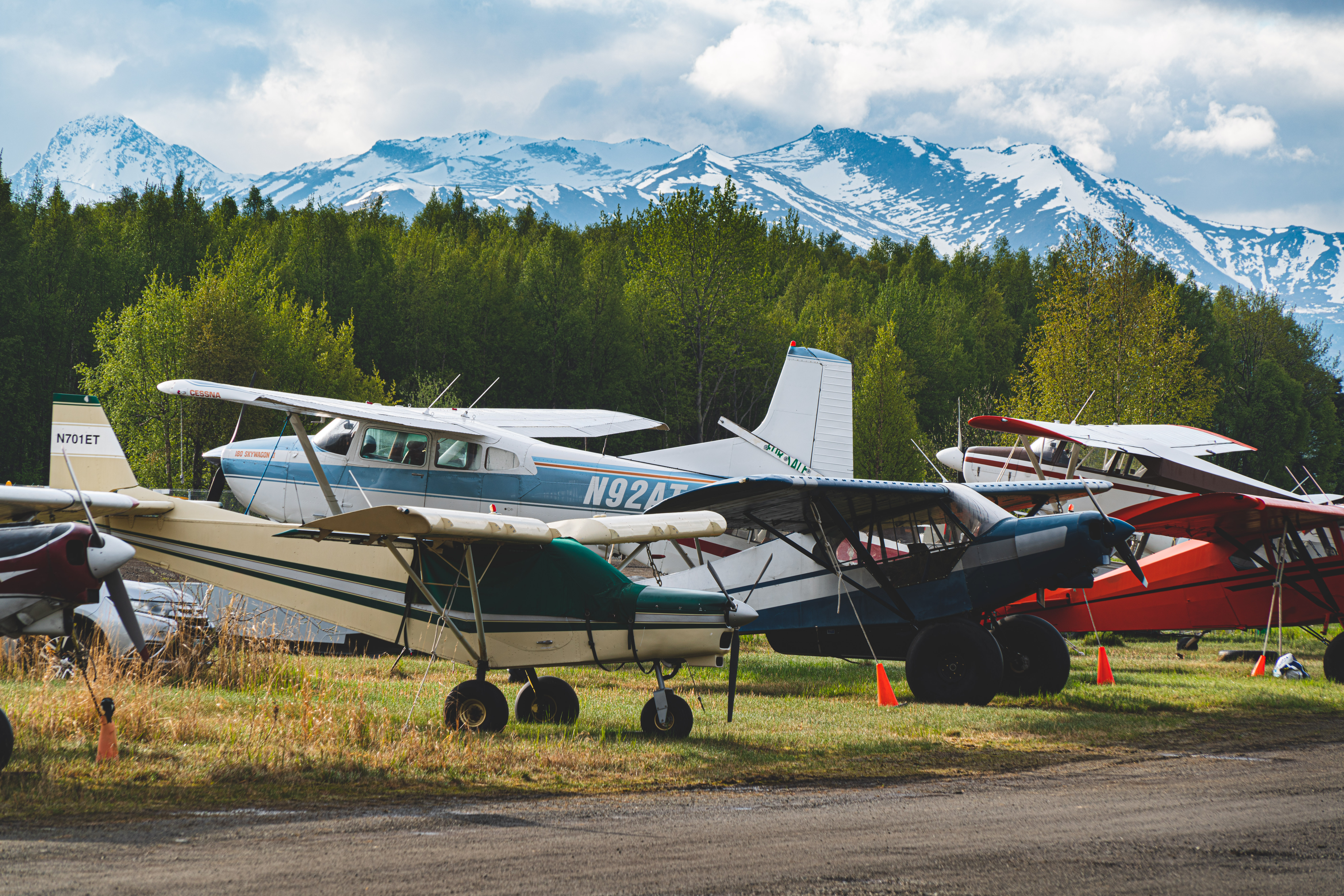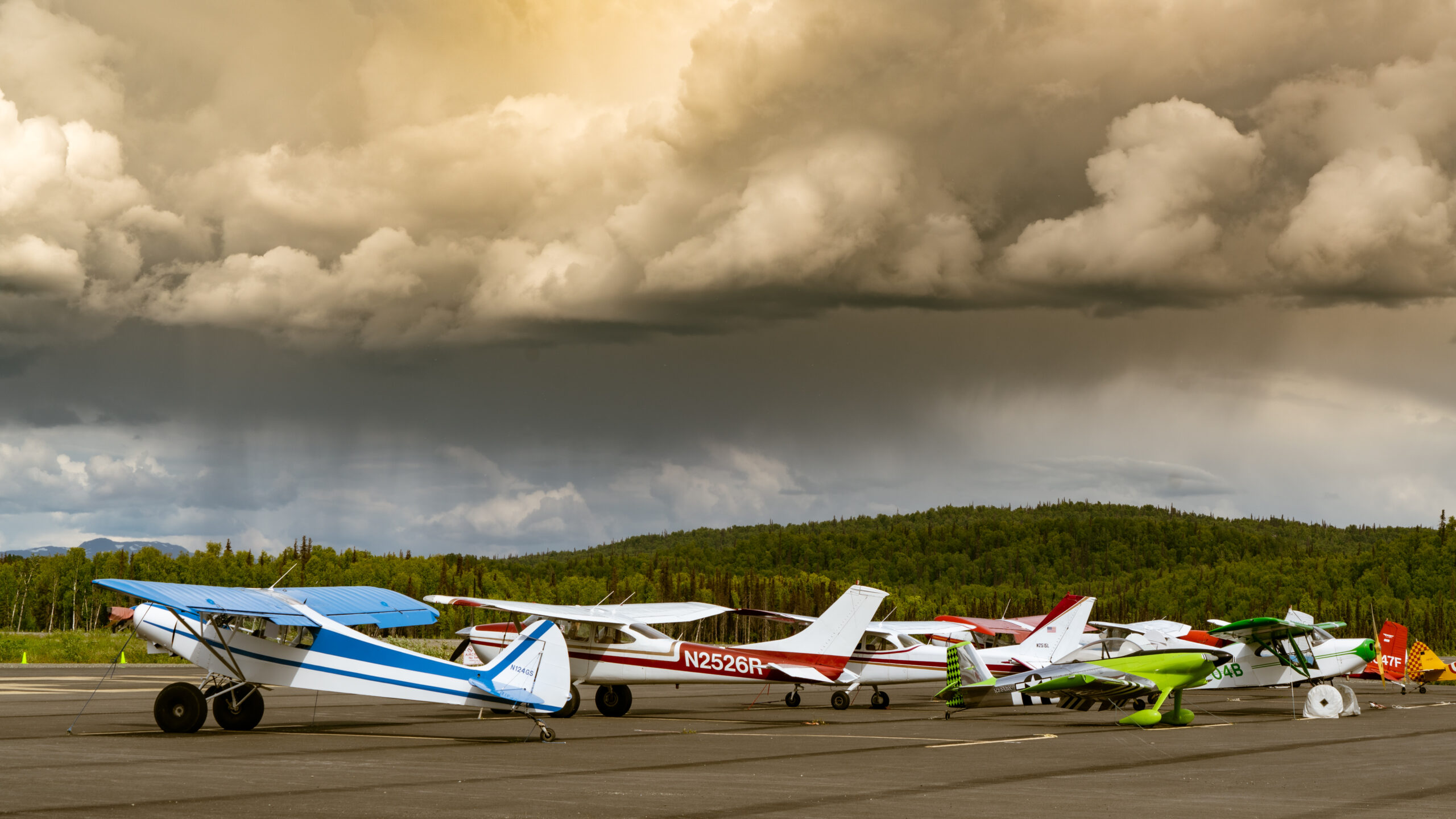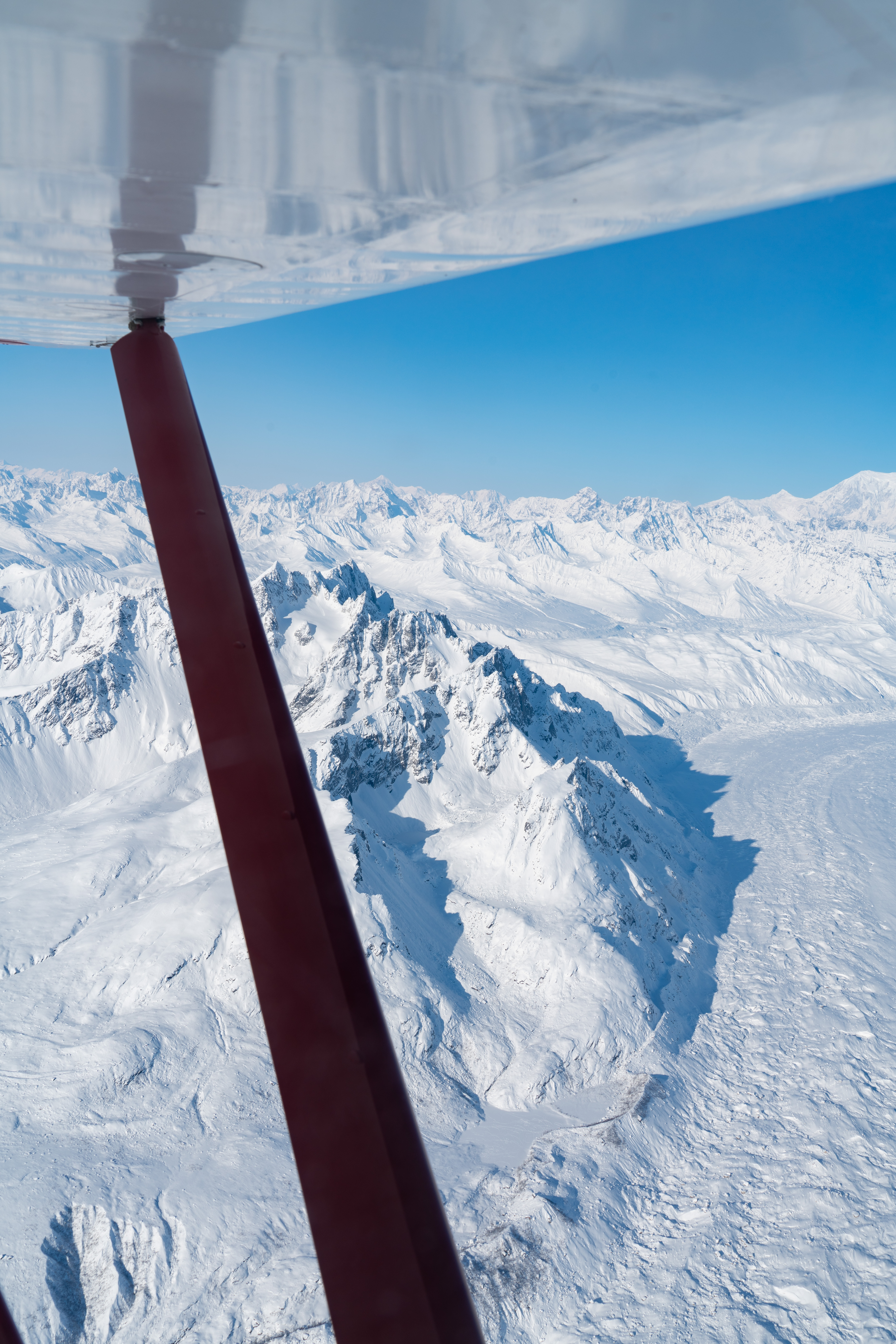
It’s your destiny to calculate your density altitude! Density altitude is perhaps the most important factor in calculating aircraft performance. But what is it? What is the Formula to calculate it?
Grab your calculator and thermometer. Let’s get down to it.
What is Density Altitude?
Density Altitude is pressure altitude corrected for nonstandard temperature. Well great…what does that mean in English? I have always thought of density altitude as the altitude the airplane “thinks” it’s at. Remember that as temperature and altitude increase the air becomes less dense. So this means the hotter, more humid, and higher you are– the greater your density altitude. The greater the density altitude – the worse your aircraft performs.
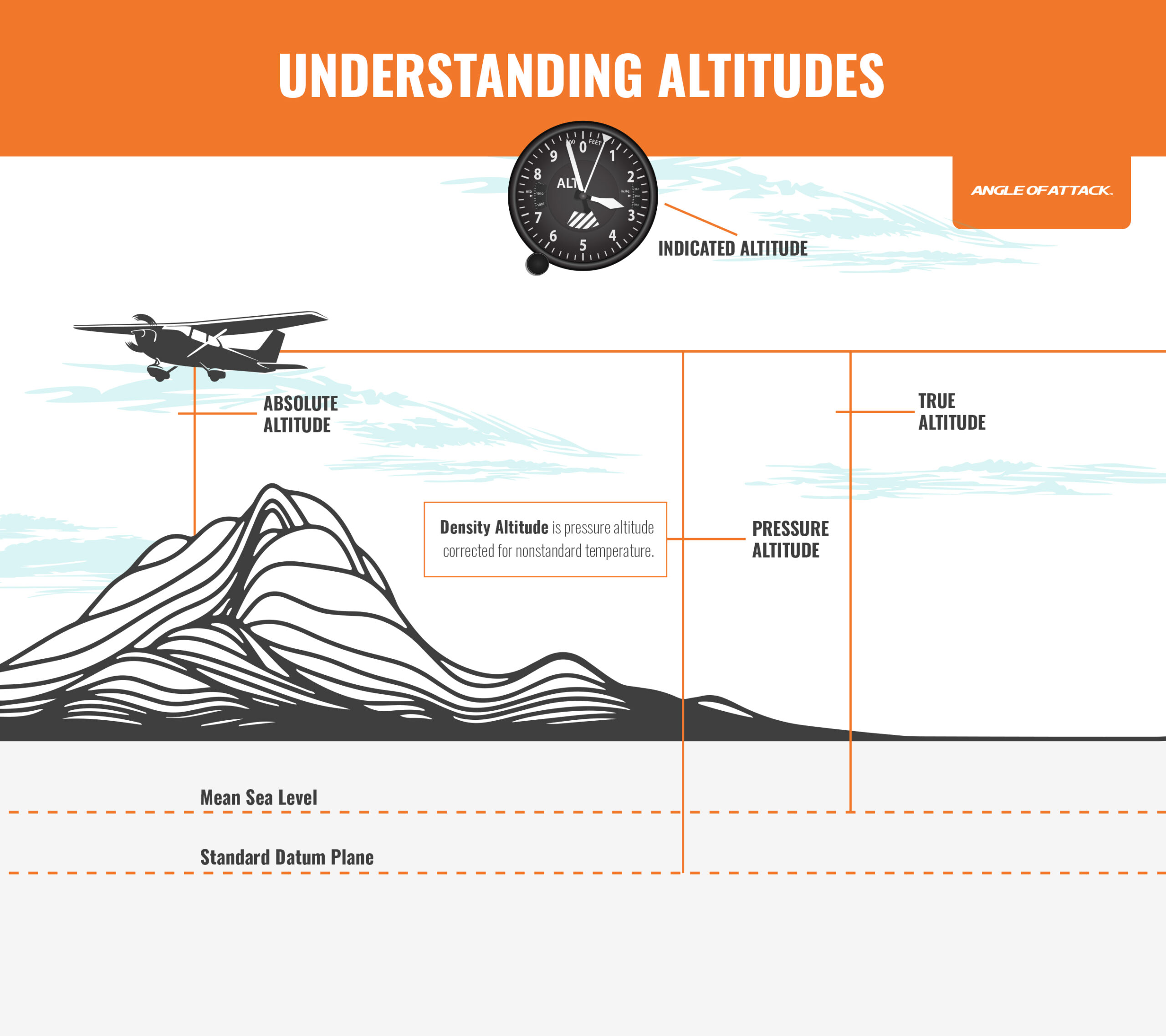
A high-density altitude is not good.
The higher your density altitude, the less air there is for your propeller to “take a bite out of.” This means the plane will be working harder to get the same amount of performance you would get on a colder flight nearer sea level. According to the NWS, some characteristics of high-density altitude are:
- Reduced Power (engine ingests less air to support combustion)
- Reduced Thrust (propeller has less “grip” and jet exhausts less mass)
- Reduced Lift (air exerts less upward force on the airfoils)
- Longer takeoff roll is required
- Smaller rate of climb
- Lowers aircraft’s service ceiling
- Longer landing roll required
Density Altitude Formula
Density altitude = pressure altitude + (120 x (O.A.T. – ISA temperature))
- Pressure altitude is determined by setting the altimeter to 29.92 and reading the altitude indicated on the altimeter.
- O.A.T stands for outside air temperature (Remember this is in Celsius!)
- ISA stands for standard temperature (Again Celsius). Remember the standard temperature is only 15 degrees C at sea level. It decreases by 2 degrees C for every 1,000 feet increase.
Calculate Density Altitude
Let’s work on a problem:
Airport elevation at KGKT (Gatlinburg-Pigeon Forge, TN) is 1,000 feet.
The current outside temperature is 86 degrees F (30 C).
The current pressure altitude is 2,000.
Plugging these numbers into our formula:
Density altitude = pressure altitude + (120 x (O.A.T. – ISA temperature)
- DA= 2,000 + (120 x (30-13))
- DA= 2,000 + (120 x (17))
- DA= 2,000+ 2,040
Density altitude = 4,040 feet
The aircraft will perform as if it is 4,040 feet. That’s pretty high. However doable for some trips, but certainly not for most others. Throw in an overloaded plane, strong winds, and mountain terrain — you’ve got a serious problem. Given that, you will want to double-check your Pilot’s Operating Handbook to see what your plane can handle for a certain trip.
If this formula seems tricky, try our Angle of Attack Online Ground School. Chris and the gang go over density altitude at length. As pilot’s instructing in the high mountains of Alaska, we understand how important this piece of flight planning is!
Want to see this in action? Check out this video of Chris dealing with high-density altitude near Mtn. Zion National Park.
What to do in High-Density Altitude?
First, you should try to avoid flying in situations where the density altitude is high. But how do you avoid doing that?
- Try flying in the early morning or evening when temperatures are cooler.
- Avoid flying in the heat of the day in summer.
- Avoid, if possible, flying out of or into high-altitude airports when the temperature is high.
If you must fly into situations where the density altitude might be high. The following are practice tips from years of experience as well as suggestions from AOPA:
Calculate Density Altitude BOTH at departure and arrival airports.
This is an easy step to overlook. Many times pilots think they only have to worry about density altitude at the airport they are departing. The logic behind this might be “Well if I can make it off the ground here, I’ll start burning fuel, performance will increase, and I’ll be good to go.” That might be true, but remember your destination airport might be hotter or higher than your departure airport. In that case, your airplane will suffer.
Know the performance specs of your aircraft.
This is just general good advice, but it is particularly important with respect to density altitude. Your Pilot Operating Handbook (POH) is a fabulous resource to find out your airplane’s tolerance for these situations. Normally the POH will have even more detailed performance charts to help you make a go/no-go decision. While the POH is helpful, remember you are Pilot-In-Command. That book can only help you so far— you have to make the determination if it is too hot to fly.
Carry less fuel/ weight
This can be the best way to help yourself out in a high-density altitude situation. Reducing weight in the form of passengers, baggage, and fuel will help compensate for the loss of performance you’ll experience due to the density altitude. It can be hard to check your ego and explain to passengers why on a perfectly warm and sunny day you can’t hold as many people as the airplane has seats. But better for someone to be on the ground wishing they were in the air than vice versa.
Know if your plane climbs better with flaps.
This goes back to the POH, but some aircraft climb better with a notch of flaps in. DON’T be a test pilot for this. Always consult your POH or other manufacturers’ advice before taking off on a hot and high day with flaps down.
Have an abort distance in mind and stick to it
Your airplane will not accelerate or climb at the rate you are used to. With this in mind, have a marker in mind and tell yourself “If I’m not at 80% of rotation speed by here, I’m knocking it off.” Most accidents with density altitude occur on climb out, and by that time… it is too late to fix anything. Address the problem before you rotate.
Avoiding high-density altitude situations is critical. High-density altitude is the sole contributor to about 7% of aviation accidents, but it’s a contributing factor to much much more. Help yourself out by becoming a master of density altitude calculations from instructors who fly in some of the highest altitudes on earth–Angle of Attack!

Michael Brown grew up flying on the banks of the Tennessee River in Chattanooga, TN. He obtained his private pilot’s license in high school and has instrument and seaplane ratings. Michael graduated from Texas Christian University, where he founded the school’s flying club, with a double major in Business and Communications. He is currently a law student at Tulane University, studying transportation law. Michael was named the Richard Collins Young Writing Award winner and has had his legal writing recognized by the American Bar Association’s Air & Space Subcommittee. When he is not flying or studying, Michael enjoys riding his bike and cheering on his Atlanta Braves.

Stay Connected
Be the very first to get notified when we publish new flying videos, free lessons, and special offers on our courses.

